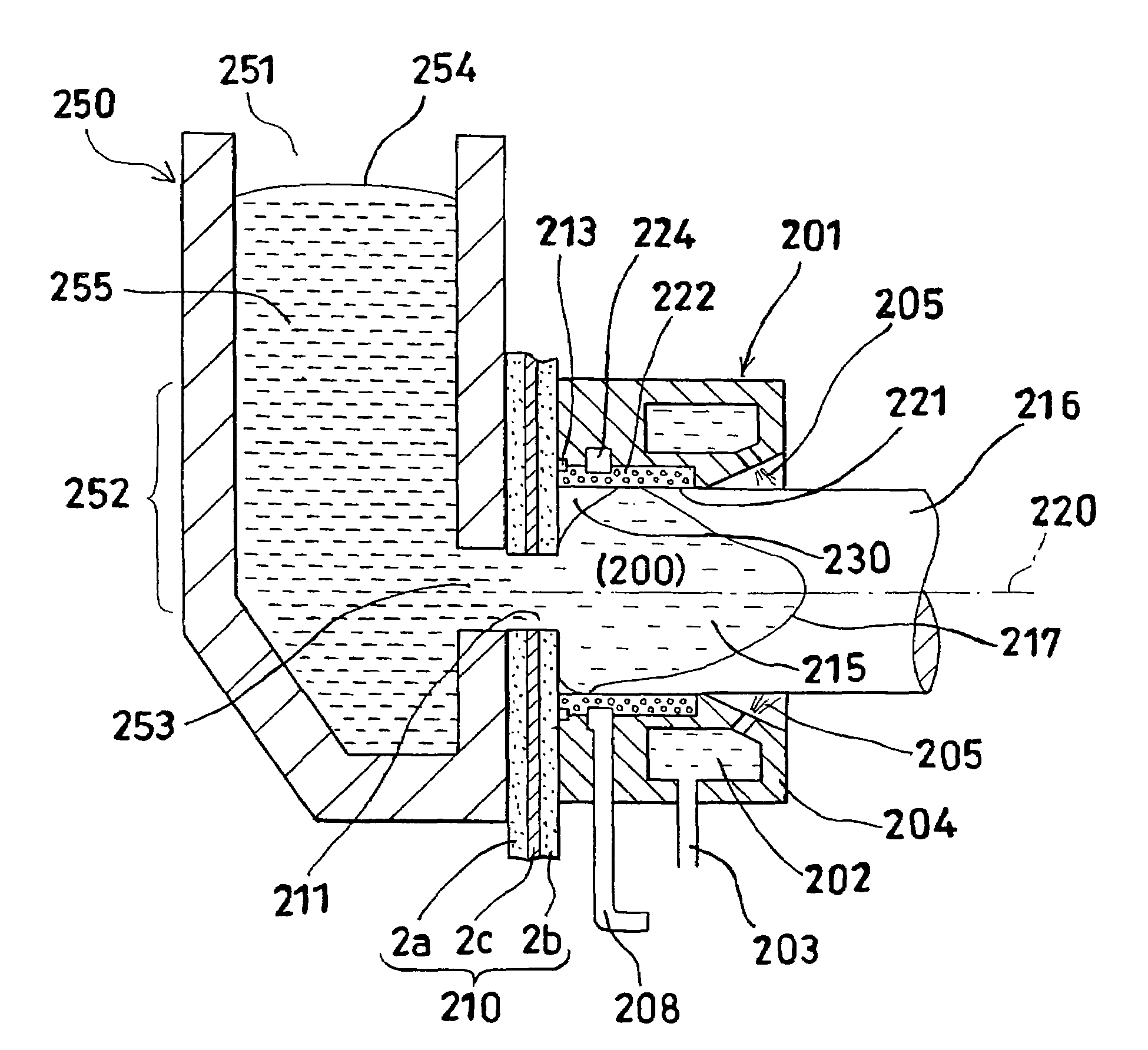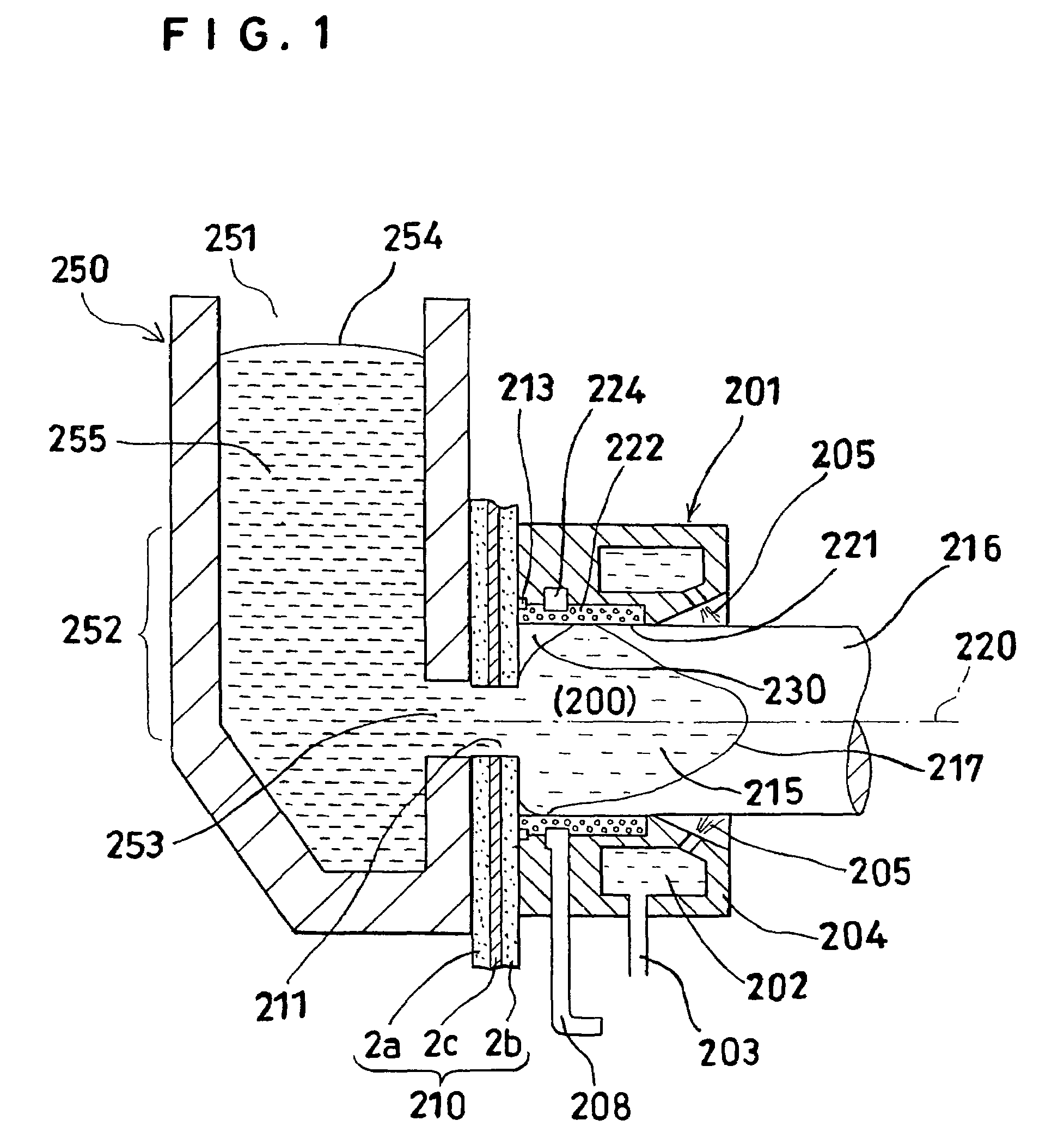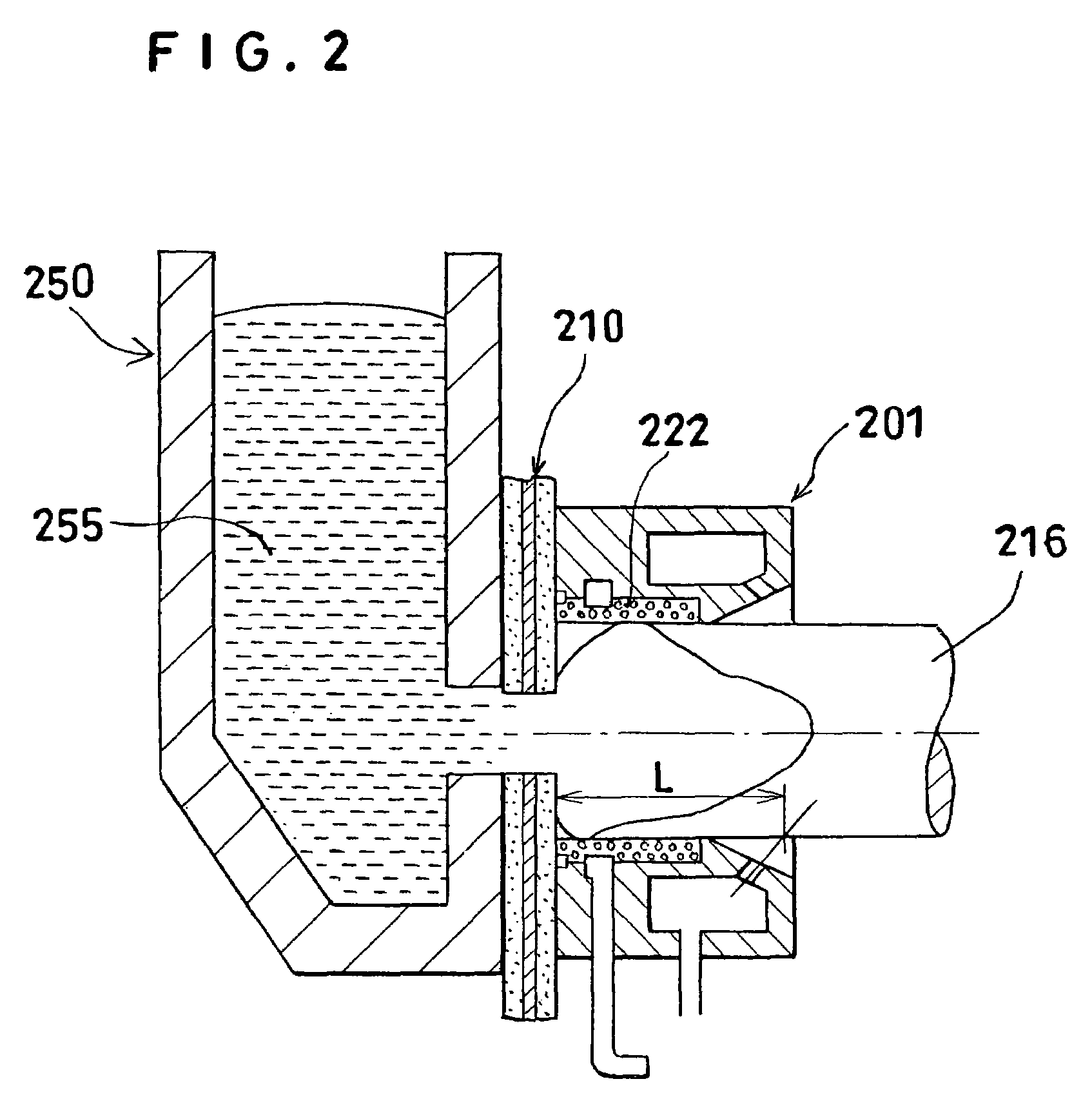Continuous casting apparatus, continuous casting method and aluminum alloy cast bar
a casting apparatus and continuous casting technology, applied in the field of continuous casting apparatus, continuous casting method and aluminum alloy casting bar, can solve the problems of large casting defect, ingot tearing, unevenness between high and low portions of the mold, etc., and achieve stable casting, reduce the amount of lubricant, and perform stably and smoothly
- Summary
- Abstract
- Description
- Claims
- Application Information
AI Technical Summary
Benefits of technology
Problems solved by technology
Method used
Image
Examples
first embodiment
[0066]Next the present invention will be described with reference to FIGS. 1 to 5.
[0067]FIG. 1 shows the vicinity of a mold of the horizontal continuous casting apparatus of the present invention. In FIG. 1, the molten metal-receiving portion is a tundish 250. The tundish 250, a refractory plate 210 and a cylindrical mold (hereinafter referred to simply as “mold”) 201 are located such that molten alloy 255 stored in the tundish 250 is supplied via the refractory plate 210 to the mold 201. As described later in detail, the refractory plate 210 comprises a first insulation member 2a, a second insulation member 2b and a separation layer 2c. The mold 201 is supported such that the mold center axis 220 becomes approximately horizontal. In order to solidify the molten alloy 255 to form a solidified ingot 216, the mold 201 is provided therein with forced cooling means for cooling the mold 201 and at the exit thereof with forced cooling means for cooling the solidified ingot 216. In FIG. 1,...
second embodiment
[0113]Next, the present invention will be described with reference to FIG. 6, FIG. 7 and FIG. 8.
[0114]FIG. 6 shows the vicinity of a mold of the horizontal continuous casting apparatus according to the second embodiment. FIG. 7 and FIG. 8 show the configurations of lubricant supply portions in the second embodiment. The difference between the first embodiment and the second embodiment resides in the configuration of the lubricant supply portion. In addition, the refractory plate 210 includes no separation layer and is configured only with an insulation member formed of, for example, Lumiboard.
[0115]In the second embodiment, as shown in FIG. 6 and FIG. 7(a), a lubricant supply conduit 224a is provided in the inner wall of the mold at a position proximal to the upstream end of the mold 201 and extended toward the downstream end of the mold 201. The width of the conduit 224a as measured in the horizontal direction is, for example, 2 to 13 mm (preferably, 2 to 7 mm.
[0116]Since the lubri...
third embodiment
[0131]Next the present invention will be described with reference to FIG. 9.
[0132]FIG. 9 is a diagram illustrating the position of the molten metal passage in the third embodiment. The third embodiment differs from the first embodiment in that the position of the molten metal passage 211 (molten metal supply port) is defined specifically. In addition, the refractory plate 210 includes no separation layer and is configured only with an insulation member formed of, for example, Lumiboard.
[0133]As shown in FIG. 9, in the third embodiment, the relationship between the molten metal passage 211 and the mold 201 is defined such that the lowermost position P1 of the inner wall of the molten metal passage is located at a position higher by the height h than the lowermost position P0 of the inner wall of the mold, the height h being equal to or larger than 8% (preferably, equal to or larger than 10%) of the inner diameter d of the mold.
[0134]Though the upper limit of the definition of the hei...
PUM
| Property | Measurement | Unit |
|---|---|---|
| thermal conductivity | aaaaa | aaaaa |
| diameter | aaaaa | aaaaa |
| mold length | aaaaa | aaaaa |
Abstract
Description
Claims
Application Information
 Login to View More
Login to View More - R&D
- Intellectual Property
- Life Sciences
- Materials
- Tech Scout
- Unparalleled Data Quality
- Higher Quality Content
- 60% Fewer Hallucinations
Browse by: Latest US Patents, China's latest patents, Technical Efficacy Thesaurus, Application Domain, Technology Topic, Popular Technical Reports.
© 2025 PatSnap. All rights reserved.Legal|Privacy policy|Modern Slavery Act Transparency Statement|Sitemap|About US| Contact US: help@patsnap.com



